|
Why Men’s Health? In Australia, the conversation around men's health has gained significant traction in recent years. The World Health Organization (WHO) defines health as 'a state of complete physical, mental, and social well-being and not merely the absence of disease or infirmity'. For men, the three most common causes of ill health and disease burden are cancer, cardiovascular disease, and mental health issues. As we delve deeper into the statistics and realities, it becomes evident that proactive measures are crucial in promoting overall well-being among men. The majority (79%) of illnesses and diseases affecting males are modifiable through exercise and other healthier habits. Furthermore, men's total burden of disease is 1.2 times that of women, reflecting its economic and societal impacts on the population (2). This underscores the growing support for the use of exercise and lifestyle adjustments in maintaining optimal health. These statistics clearly position men’s health squarely within the scope of the WHO definition and emphasize its importance as a focal point for exercise physiologists.  Correlation of fitness to threshold for dependence (7) The role of exercise Exercise is not merely about physical fitness but is integral to maintaining mental well-being. Regular physical activity has been shown to reduce the risk of chronic diseases such as heart disease and diabetes, while also improving mood and reducing stress levels. Initiatives promoting active lifestyles among men have seen encouraging results, emphasizing the positive impact of exercise on overall health. Men who have increased aerobic fitness and muscular strength have improved other aspects of wellness such as dietary habits, lesser consumed alcohol, increased steps daily and consistency with dental health just to name a few (4). What types of exercise you may ask? 1. Cardiovascular Exercise: Activities such as brisk walking, jogging, cycling, or swimming help improve heart health and boost overall endurance. Recently high intensity interval training or HIIT has become popular and it stands as a sound choice recently demonstrating with both short and long rest periods a noteworthy improvement in VO2Max comparatively to other methods of training (5). 2. Strength Training: Incorporating resistance exercises with weights or body weight (e.g., push-ups, squats) builds muscle strength and supports bone health. Men particularly respond well in health outcomes and quality of life scores with an increase intensity of exercise versus women, so try find yourself some big weights for your exercises (6). 3. Flexibility and Balance: Practices like yoga or tai chi enhance flexibility, balance, and coordination, reducing the risk of falls and injuries. Lifestyle Changes for Better Health Beyond exercise, lifestyle choices play a pivotal role in men's health. Dietary habits, smoking, and alcohol consumption are critical factors influencing overall well-being. Embracing a balanced diet rich in fruits, vegetables, and lean proteins supports physical health, while reducing tobacco and alcohol intake can mitigate the risk of chronic diseases. Australian businesses are stepping up to promote healthier lifestyles among employees, offering wellness programs that educate and incentivize positive choices. By fostering a culture of health within workplaces, organizations contribute not only to the individual well-being of their employees but also to increased productivity and morale. This could be the beginning of your changes if you think of how much of your time you spend at work in a week. Recommendations for Lifestyle Changes: 1. Healthy Eating: Opt for a diet rich in fruits, vegetables, whole grains, and lean proteins while minimizing processed foods and sugars. A good place to start is following the Australian Guide to Healthy Eating, or even visiting a dietitian if you are particularly stuck.  Australian Guide to Healthy Eating (1) 2. Smoking Cessation: Seek support through smoking cessation programs and resources to quit smoking for good. Your doctor, Exercise Physiologist and other health professionals can always refer you to the right place.
3. Moderate Alcohol Consumption: Limit alcohol intake to reduce the risk of liver disease, cardiovascular problems, and mental health issues. Again there are guidelines out there (eg. No more than 10 a week, or 4 in a day) but if you need support always consider your doctor as an ally. Seeking Professional Guidance For men looking to kickstart their journey towards better health, consulting an exercise physiologist can be highly beneficial. These specialists are trained to assess individual fitness levels, tailor exercise programs, and provide guidance on achieving health goals effectively and safely. Whether recovering from an injury, managing a chronic condition, or simply aiming to improve overall fitness, an exercise physiologist offers personalized support and accountability in optimizing health outcomes. Addressing men's health in Australia demands a collective effort to promote exercise and lifestyle changes. By raising awareness, advocating for preventative measures, and supporting healthy choices, we can empower men across the country to lead fulfilling and healthy lives. Together, we can build a future where men's health is prioritized, ensuring a stronger, healthier Australia for generations to come. Thomas Harrison Resources used for further reading:
0 Comments
Are you worried that if you start weight/ strength training that it will make you look bulky, too masculine or even like a bodybuilder? Well we are here to debunk that myth and let you know that is not the case! Weight training will actually cause you to tone up, decrease body fat and accentuate your curves for all the ladies reading! Here are 4 reasons why strength training should be a part of EVERYBODY’S routine and also why you won’t turn into Arnold Schwarzenegger either! 1. Muscles aren’t made overnight. Increased muscular hypertrophy and size is actually quite difficult to achieve and takes prolonged periods of time, consistency and dedication so it won’t happen the first time you pick up a dumbbell! It takes up to 3 months just to recognise any significant changes in strength or muscle size. To reach “body-builder” levels you would have to be training and eating in extreme fashions for years, we guarantee you it won’t happen to you by accident. The reassuring news is that to maintain and even increase our muscular strength and endurance we only have to be lifting weights on 2 days of the week. These improvements will help you with day to day activities (think lifting the kids/ grandkids, lifting pots/ soil in the garden or even just carrying the shopping bags!), increase your energy levels and confidence. 2. Six packs are made in the kitchen. If you have ever heard this saying before you might already know that having a toned figure will be the outcome of both what exercise you are doing and the food you are eating. To reach bodybuilder status you would have to be consuming an extreme amount of food to keep up with the demands of your body. In the opposite sense to reveal the toned muscles you have built up through strength training you will need to reduce your body fat that sits above them. This is achieved predominantly through diet, weight loss is approximately 80% diet and 20% exercise. 3. Weights help to shape your body.
Have you previously spent hours in the gym on the treadmill, cross trainer and bike trying to burn every ounce of body fat off, only to realise it still has not produced the figure you were hoping for? Creating a strong muscular foundation creates that “perkier” bum, toned arms, better posture and so much more. Increasing muscle mass helps to tone all over the body even without losing significant amounts of body fat. 4. You’ll burn more calories without even trying. Lifting weights doesn’t only impact the size and strength of your muscles… It improves a number of other physiological aspects too! Bone density, joint health, metabolism, brain health and energy levels all improve with weight training just to name a few! We also know that lean muscle mass burns more calories throughout the day regardless of what you are doing, when compared to fat mass. This means the more muscle you have, the more energy/ calories you will burn! So, if you have been avoiding the weights, now is the time to go and pick them up! What are you waiting for? Written By, Aleisha Michael Accredited Exercise Physiologist. So, you work in a physically demanding job and feel that this gets you enough physical activity throughout your day that you don’t need to do any extra, right?... WRONG. Whilst all this extra incidental activity throughout your day is giving you additional health benefits, it doesn’t give you the same BENEFITS as structured physical activity. What is the difference between incidental and structured physical activity? Incidental activity is defined as NON-PLANNED, UNSTRUCTURED ACTIVITY that accumulates in small portions over the course of a day. It can take many different forms including;
Whereas structured physical activity is PLANNED ACTIVITY that is completed in a continuous bout. This includes a planned walk, run or bike ride, gym sessions or classes or any other planned exercise session done individually or with others. Can I just do incidental activity? Whilst incidental activity provides many positive benefits it does not provide the same degree of benefit as structured physical activity. This is due to structured activity being completed in a continuous bout enabling our heart rate to increase, improving our cardiovascular and respiratory health. Completing specific strength training in planned exercise sessions also promotes a further increase in muscular strength and endurance when compared to incidental activity. Research has also shown that when activity is completed at a moderate intensity it assists in the prevention of a number of chronic conditions, including but not limited too;
What are the benefits of incidental activity?
By keeping your daily routine as active as possible there are a number of benefits that occur as well, such as;
So, what type of activity should I focus on? At the end of the day all movement counts and should be encouraged, whether it is a planned workout or sneaking a few extra steps in around the office! If you feel that you have been lacking with your structured physical activity recently, try adding in a few extra steps to your day by parking the car further away, taking the stairs instead of the lift or getting up from your chair once every hour! If you would like some more guidance about how to fit structured or incidental activity into your day try visiting an Accredited Exercise Physiologist! By, Aleisha Michael Accredited Exercise Physiologist. The understanding of pain has come a long way in the last 20 years and if not longer. Research on the topic has been ground breaking and has allowed us to understand pain and helped us provide better care for our clients. One area of research that is particularly interesting is around pain education and the benefits just knowing and understanding pain can have. Knowing that understanding pain can change the way your pain feels, I wanted to write this blog to give you a quick insight and understanding of some key concepts of pain to help everyone learn. Pain is always real Pain and especially chronic pain is a very complex topic, much more complex than we first thought. You may have heard stories about people who should be in pain but are not and people who should not be in pain but are, just does not make much sense right? Pain is always real, but what the contributing factors driving the pain you feel may differ. A health professional with a good understanding of pain science will never disregard your pain because they can't identify any physical reason for your pain but help you understand what may be causing or amplifying the pain you feel. Pain depends on context Pain is a complex interaction of biological, psychological and social factors. This interaction can include:
These factors that form the context of your pain may amplify or improve the pain you feel. This means the pain you feel can change just by changing the way you think and feel. Believe it or not, people have been found to have a more painful experience when exposed to heat when looking at a red light rather than a blue light because we associate red with danger unconsciously. This means a lot of factors can influence and contribute to your pain however in turn by working on changing these factors you can improve your recovery. Educate yourself on your pain The first step in recovery is to learn about your pain, this helps to understand your health professional when talking about your pain and learning about some common concepts can help you re-engage with physical activity and movement and allow you to have confidence you are not harming yourself. As mentioned previously with all the research that has been done, we now have a better understanding of what can be achieved if you know more about pain and your own pain in particular. Simply understanding pain can change the way it feels. Educating yourself about your pain helps you to be proactive and helps to take ownership of your own recovery which means you are not relying on anyone else to help you make a big difference. Pain does not always equal tissue damage The complex interaction between biological, psychological and social factors helps to understand that many factors contribute to your pain, this also helps us to understand that just because there is pain, does not mean there is tissue damage. In fact, pain is used by the body to prevent tissue damage. There is a large amount of research that has found that many people have some abnormalities on scans but have no pain and that these abnormalities are actually just age related changes. The opposite can also occur where there is pain but no abnormal changes to scans. Even the way you are told about your scans can contribute to your pain. Humans are very strong and have an amazing ability to heal or adapt. The pain experienced may be because of an acute injury or damage to tissues, but our bodies are very capable of healing, and when this pain continuous after healing, the amount of contribution of psycho social factors to the pain experienced becomes greater. When you understand that pain does not equal tissue damage, you become less afraid and more confident to move, retraining your brain system. Pain is there to protect you Pain is a deliberate and vital mechanism of the body to protect you from harm. The body uses pain to help change your behaviour that it thinks is dangerous and therefore protects you from causing any harm. The brain is at the centre of your pain system, the brain gets messages from nerves in your body that we can call “danger detectors”, these danger detectors send information to your brain that the body may be in danger. The brain then takes this information, along with all the relevant psychological and social information it has already stored and makes a decision whether your body is in danger or it is safe. If your brain concludes your body is in danger, it will produce pain in order to change your behaviour to avoid this danger. An amazing fact about the body's pain system is that it can create pain with no physical stimulus or injury. Simple thoughts, past experiences and feelings can create enough evidence of danger for the brain to produce pain. A normal pain system allows a buffer to produce pain prior to any tissue damage occurring big enough so that the injury does not happen but small enough so we don't get pain when we don't need it. This buffer grows bigger as the pain system gets more and more sensitive and overprotective because we feel pain way before our body is in danger. When your body gets over protective Like anything that happens in your body, the pain system learns pain. The more you have lived with pain, the better your pain system is at producing it. When danger messages are sent to the brain it travels to the spinal cord and then to the brain. When this process is repeatedly done, the pain system learns to respond better. This means the pain system is more sensitive and overprotective and the danger messages that are sent to the brain are turned up. When these turned up danger messages reach the brain, the brian is more likely to produce pain. The brain also gets more efficient at producing pain and the brain does not only respond to a sensitive spinal cord but also any sign of danger like from your psychological and social factors that influence pain. Resetting the buffer for your pain system to return to producing pain only when it is truly needed is an important step in getting back to your normal activities. Getting out of this the same way you got into it The reason why the pain system can become overprotective and learn how to produce pain better is because of bioplasticity. Bioplasticity is the scientific meaning of our body’s ability to adapt and thanks to bioplasticity we can retrain the pain system to return to normal. The idea of retraining the pain system starts with understanding and learning about your pain, knowing that it can be sensitive and over protective and simple things like your thoughts, beliefs and past experience can influence the pain you feel. With this knowledge you can then start to move more even when you do get some pain, eventually this movement and new belief can push the buffer of your pain system in the right direction. Resetting the pain system and its buffer takes a lot of time and patience but it is important you stick at it. Each small bit of movement is a win, each small win is remembered by your system and bit by bit you will make progress towards recovery. You are the best weapon against your pain Being proactive, looking for solutions, learning about pain, actively rethinking your own pain, trying new things and doing things for yourself rather than waiting for things to be done for you is the best way for recovery.
Over time you will learn more and more about your pain and what is influencing it, you will learn what the best strategies for recovery are and you will build your own positive experiences that can positively influence your pain experience. Recovery from chronic or long term pain is a journey not a quick fix. Seek the right advice, learn more about what is going on and take control. Izaac Boylan Accredited Exercise Physiologist |
AuthorSLisa Parkinson Archives
July 2024
Categories
All
|

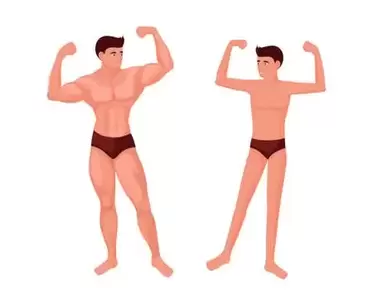
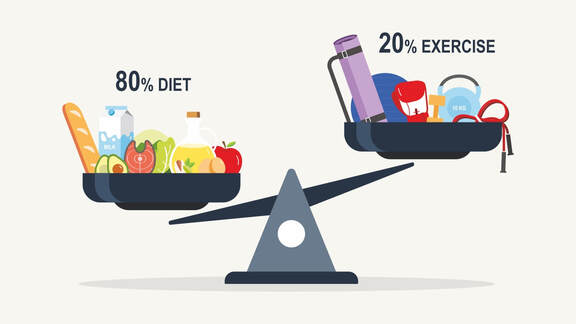


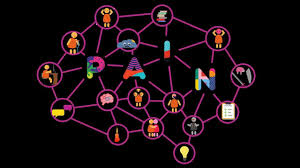
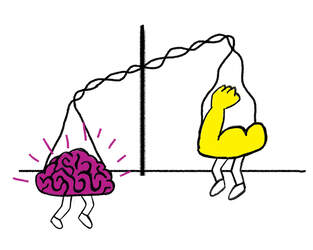

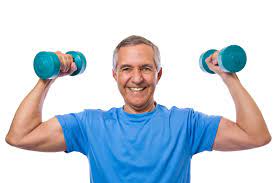
 RSS Feed
RSS Feed